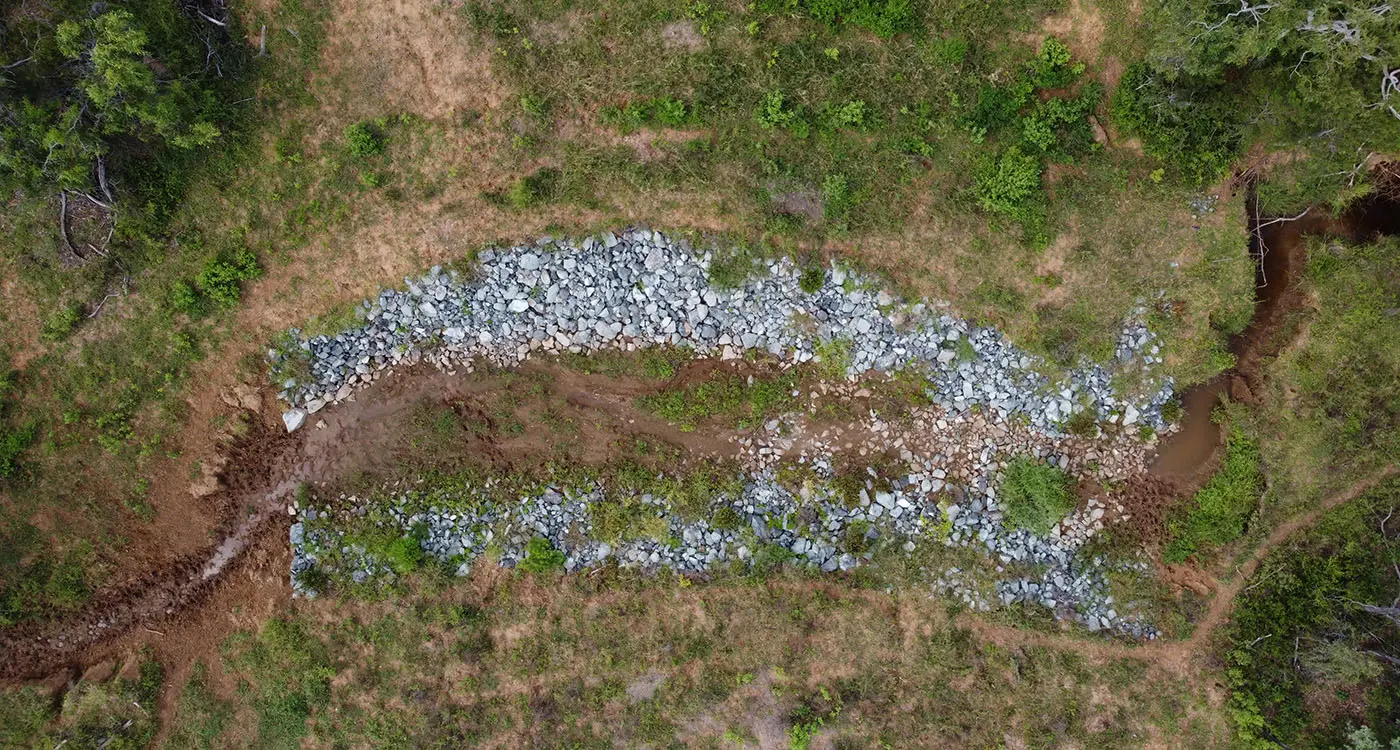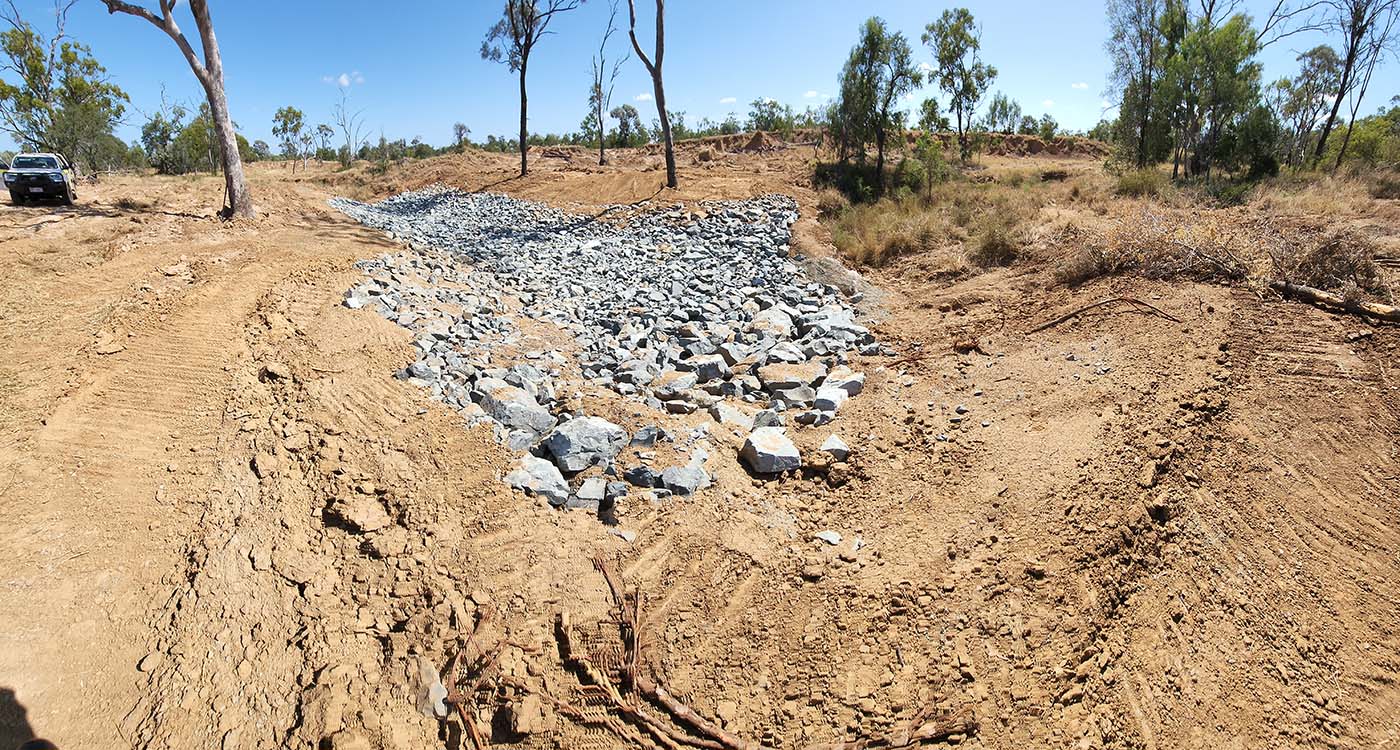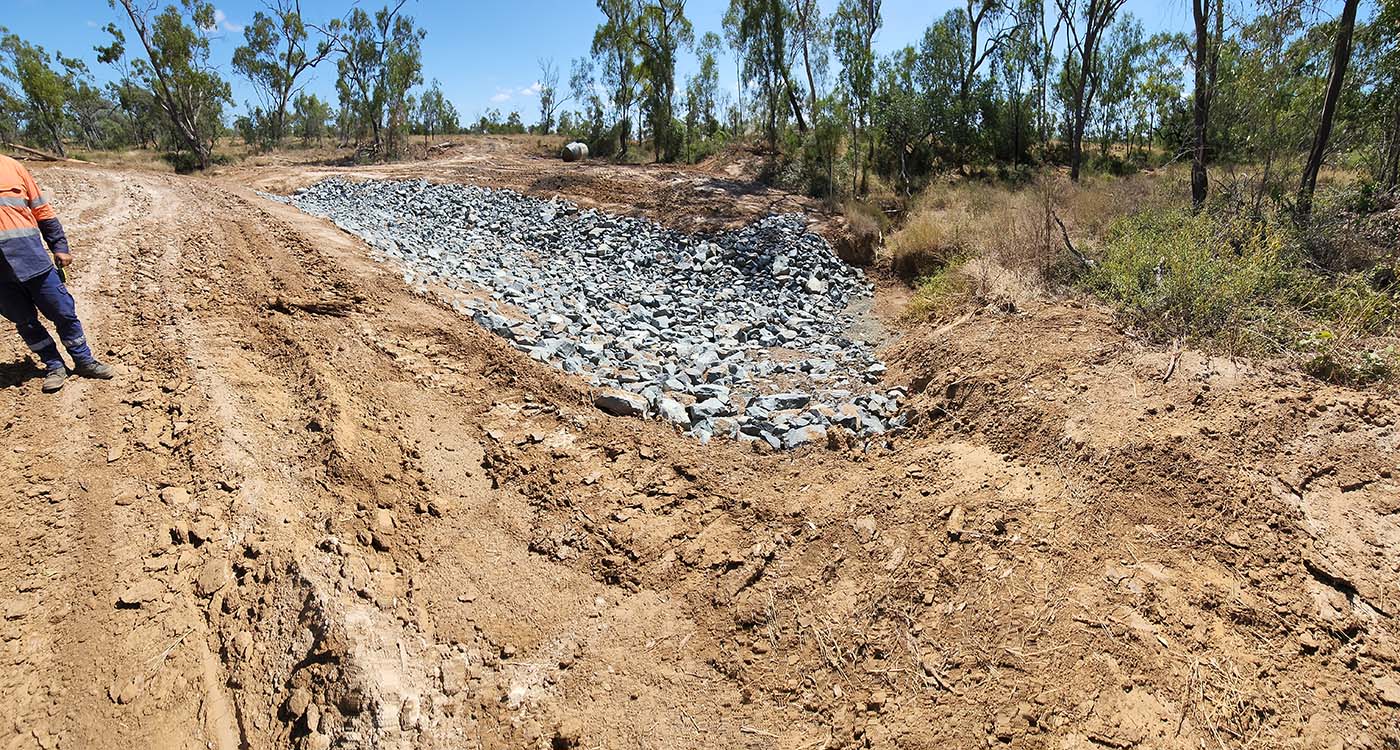Two-stage Havilah Station gully project is now complete
LDC’s large-scale gully remediation site at Havilah Station, near Collinsville, is now complete.
The Havilah gully site was selected as a priority project based on the work completed by the Griffith University project team as part of the LDC project to characterise and prioritise gully remediation across the BBB catchment.
The works consisted of two main gully systems covering 110ha. The majority of the site is on Havilah Station, with a portion to the east on Gattonvale Station. The partnership between the two properties meant the effort on one property to halt the gully expansion, would benefit both.
The first gully (stage one works) included two grade control rock chutes, one about one third along the gully and a second about two thirds along the gully.
An overland flow bund was constructed to assist with directing water flows to the upper chute. The lower chute was designed to hold water to encourage sediment deposition. The head of the gully was reshaped to assist with overland flow and revegetation.
Works on the second gully (stage two) included a 4m wide rock chute to remediate the gully head cut and to prevent further propagation towards the road. Two bunds either side of the chute were constructed to help direct road runoff to the design grade control rock chute.
The lower part of the gully was remediated to remove tunnelling to scalded lower sections of gullies. Gully reshaping works were completed in the head cuts adjacent to the chute.
The technical designs were prepared by engineering firms Alluvium and Veterra, and Veterra project-managed the works. Local contractors carried out the work.
The fine sediment prevented from flowing into waterways leading to the Great Barrier Reef lagoon is expected to be 1600 tonnes each year.
Chute 2
(Gully at the southern-most area of Stage 1 works).
Monitoring photographs taken with a drone after on-ground works illustrating the effectiveness of the intervention as soil is deposited along the chute allowing plants to take root. The plants provide stability and help to slow flowing water.
25 May, 2022… rock work is still “fresh: with no vegetation over it.
1 February, 2023… plants beginning to appear on the edges of each “prong”.
13 March, 2023… small bushes and other plants well established providing stability and a further barrier to slow flowing water.
Chute 3
(Middle of Stage 1, one-third of the way down the gully).
Monitoring photographs taken with a drone after on-ground works illustrating the effectiveness of the work as ground cover gradually covers the rock chute, providing stability and helping to slow flowing water.
25 May, 2022… the rock chute now installed has virtually no vegetation growing over it.
1 February, 2023… plants have established themselves along the edge of the chute.
13 March, 2023… vegetation is growing in deposited soil along the centre of the chute.
Chute 1
(Gully near Collinsville-Exmoor Road).
Monitoring photographs taken before, during and after on-ground works. Images were taken from the bottom of Chute 1.
15 December, 2020
4 July, 2020
25 May, 2022
Chute 2
(Gully at the southern-most area of Stage 1 works).
Monitoring photographs taken before, during and after on-ground works. Images were taken from the bottom of Chute 2.
15 December, 2020
4 July, 2020
25 May, 2022
Chute 3
(Middle of Stage 1, one-third of the way down the gully).
Monitoring photographs taken before, during and after on-ground works. Images were taken from the top of Chute 3.
5 August, 2021
7 April, 2022
13 March, 2023
ALSO IN THIS ISSUE:

















